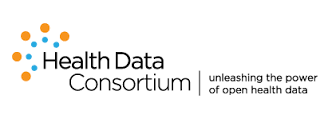 In a great post, "Doctor as Designer" Joyce Lee laments the "sad state of product and design in healthcare," and asks "when will device and drug companies create user-centered innovations that actually improve the lives of patients instead of their bottom line?" I heartily agree with Dr. Lee's point, and think the question can be extended to the rest of the health care system. Dr. Lee uses two examples to compare health care to consumer goods. Heinz took a product design -- the glass ketchup bottle -- that had been around for over a hundred years, and greatly improved the user experience by changing to a squeezable "upside down" bottle. This not only kept the ketchup from concentrating at the bottom but also avoided the need to hold the bottle at a special angle or to tap at a particular spot just to get the ketchup out...
In a great post, "Doctor as Designer" Joyce Lee laments the "sad state of product and design in healthcare," and asks "when will device and drug companies create user-centered innovations that actually improve the lives of patients instead of their bottom line?" I heartily agree with Dr. Lee's point, and think the question can be extended to the rest of the health care system. Dr. Lee uses two examples to compare health care to consumer goods. Heinz took a product design -- the glass ketchup bottle -- that had been around for over a hundred years, and greatly improved the user experience by changing to a squeezable "upside down" bottle. This not only kept the ketchup from concentrating at the bottom but also avoided the need to hold the bottle at a special angle or to tap at a particular spot just to get the ketchup out...
user-centered design
See the following -
AcademyHealth Becomes Host Organization for 2016 Health Datapalooza
 AcademyHealth will host the 7th Annual Health Datapalooza, May 8-11, 2016, in Washington, DC. “As the national organization working with the producers and users of evidence to improve health and the performance of the health system, and the home of the EDM Forum, AcademyHealth has long been a champion for data liberation and a catalyst for its use in decision making and quality improvement,” said AcademyHealth President and CEO, Dr. Lisa Simpson. “As hosts of the Health Datapalooza, we’ll build on our work in this area to shape an agenda that engages the broad community of data liberation champions -- patients, advocates, researchers and delivery system and industry leaders -- in focused discussions about how we turn data into evidence, and evidence into actions that improve health outcomes.”
AcademyHealth will host the 7th Annual Health Datapalooza, May 8-11, 2016, in Washington, DC. “As the national organization working with the producers and users of evidence to improve health and the performance of the health system, and the home of the EDM Forum, AcademyHealth has long been a champion for data liberation and a catalyst for its use in decision making and quality improvement,” said AcademyHealth President and CEO, Dr. Lisa Simpson. “As hosts of the Health Datapalooza, we’ll build on our work in this area to shape an agenda that engages the broad community of data liberation champions -- patients, advocates, researchers and delivery system and industry leaders -- in focused discussions about how we turn data into evidence, and evidence into actions that improve health outcomes.”
- Login to post comments
Africa’s First Humanitarian Drone Testing Corridor Launched in Malawi
 The Government of Malawi and UNICEF today launched an air corridor to test potential humanitarian use of unmanned aerial vehicles (UAVs), also known as drones. The corridor is the first in Africa and one of the first globally with a focus on humanitarian and development use. It is centred on Kasungu Aerodrome, in central Malawi, with a 40km radius (80km diameter) and is designed to provide a controlled platform for the private sector, universities and other partners to explore how UAVs can be used to help deliver services that will benefit communities...
The Government of Malawi and UNICEF today launched an air corridor to test potential humanitarian use of unmanned aerial vehicles (UAVs), also known as drones. The corridor is the first in Africa and one of the first globally with a focus on humanitarian and development use. It is centred on Kasungu Aerodrome, in central Malawi, with a 40km radius (80km diameter) and is designed to provide a controlled platform for the private sector, universities and other partners to explore how UAVs can be used to help deliver services that will benefit communities...
- Login to post comments
AHRQ Announces Health IT Research Funding Opportunities
The Agency for Healthcare Research and Quality (AHRQ) will be sponsoring research projects geared toward bettering health information technology, according to a public statement. Specifically, the agency seeks to support research for improving the safety of health IT to better inform policymakers at the Centers for Medicare & Medicaid Services (CMS), the Food and Drug Administration, and the Office of the National Coordinator for Health Information Technology (ONC)...
- Login to post comments
Artificial intelligence in medicine: Is the genie out of the bottle?
 It is probably a given that artificial intelligence (AI) will become an integral part of healthcare delivery and of our public health infrastructure. What is not a given is that we will easily reach that point, and maintain progress in a way that maximizes its effectiveness in achieving the goals we have come to expect of it – efficient and improved healthcare and public health systems. In other words, making the health of people better in a cost-effective way. Responsible commentators have already begun to question the value of AI in medicine.
It is probably a given that artificial intelligence (AI) will become an integral part of healthcare delivery and of our public health infrastructure. What is not a given is that we will easily reach that point, and maintain progress in a way that maximizes its effectiveness in achieving the goals we have come to expect of it – efficient and improved healthcare and public health systems. In other words, making the health of people better in a cost-effective way. Responsible commentators have already begun to question the value of AI in medicine.
- Login to post comments
Changing the world with open source: GNOME president shares her story
 Growing up in Silicon Valley, Nuritzi Sanchez saw the powerful impact software can make on the world. Yet, unlike many others who were also steeped in the tech industry, her journey has taken her into the world of open source, where she is contributing to that impact. After graduating from Stanford University with a degree in International Relations, she became a founding team member of open source computing company Endless OS, served three terms as president and chair of GNOME's board of directors, and in February 2020 was hired as the senior open source program manager (OSPM) at GitLab. I am impressed by this talented woman, and I reached out to her to learn more about her and her work. I believe you will also be fascinated with her journey after reading our interview, which has been lightly edited for clarity.
Growing up in Silicon Valley, Nuritzi Sanchez saw the powerful impact software can make on the world. Yet, unlike many others who were also steeped in the tech industry, her journey has taken her into the world of open source, where she is contributing to that impact. After graduating from Stanford University with a degree in International Relations, she became a founding team member of open source computing company Endless OS, served three terms as president and chair of GNOME's board of directors, and in February 2020 was hired as the senior open source program manager (OSPM) at GitLab. I am impressed by this talented woman, and I reached out to her to learn more about her and her work. I believe you will also be fascinated with her journey after reading our interview, which has been lightly edited for clarity.
- Login to post comments
CommonHealth Will Enable Android Phone Users to Access and Share their Electronic Health Record Data with Trusted Apps and Partners
 Cornell Tech, UC San Francisco (UCSF), Sage Bionetworks, Open mHealth and The Commons Project are collaborating to develop CommonHealth, an open-source, non-profit public service designed to make it easy and secure for people to collect their electronic health record data and share it with health apps and partners that have demonstrated their trustworthiness. CommonHealth will leverage data interoperability standards, including HL7 FHIR to offer functionality analogous to Apple Health™ to users of Android™ phones.
Cornell Tech, UC San Francisco (UCSF), Sage Bionetworks, Open mHealth and The Commons Project are collaborating to develop CommonHealth, an open-source, non-profit public service designed to make it easy and secure for people to collect their electronic health record data and share it with health apps and partners that have demonstrated their trustworthiness. CommonHealth will leverage data interoperability standards, including HL7 FHIR to offer functionality analogous to Apple Health™ to users of Android™ phones.
- Login to post comments
Hi, Engineering, I’m UX. Let’s be friends
The relationship between user experience (UX) and engineering is a crucial factor when it comes to generating technical innovation. After spending a week at the SXSW Interactive festival earlier this year, I was struck by the number of missed opportunities to nurture this relationship or even understand it better. UX professionals and engineers just don’t talk, and when they do they usually speak different languages.
- Login to post comments
Inside the Design-Thinking Environment USDS Is Creating at CMS
The Centers for Medicare and Medicaid Services is looking to craft its extensive Quality Payment Program with a user-centered design program baked in, an official said Monday. And with the user at the center, that means completely changing the way those program requirements are created...
- Login to post comments
On the Need to Improve User-Centered Design (i.e. Design Thinking) for Healthcare IT Usability
 The lack of usability of electronic health records (EHRs) and healthcare IT applications, in general, has been in the news a lot again. This time it is a research report published in the Journal of the American Medical Association (JAMA) on March 27. The study analyzed voluntary error reports associated with EHR systems and found that problems with EHR usability may have directly resulted in patient harm. Unfortunately, this situation is all too common in the healthcare industry. Numerous health care systems are designed and created ad hoc, or with a very engineering-centric approach. End users are dissatisfied and often systems or workflows are abandoned and/or dangerous work-a-rounds created. A lot of people are saying Healthcare IT needs a disruption. What HealthIT needs is to begin to learn about and understand the needs, goals, and methods of the actual end-users, like doctors, nurses, medical assistants, etc.
The lack of usability of electronic health records (EHRs) and healthcare IT applications, in general, has been in the news a lot again. This time it is a research report published in the Journal of the American Medical Association (JAMA) on March 27. The study analyzed voluntary error reports associated with EHR systems and found that problems with EHR usability may have directly resulted in patient harm. Unfortunately, this situation is all too common in the healthcare industry. Numerous health care systems are designed and created ad hoc, or with a very engineering-centric approach. End users are dissatisfied and often systems or workflows are abandoned and/or dangerous work-a-rounds created. A lot of people are saying Healthcare IT needs a disruption. What HealthIT needs is to begin to learn about and understand the needs, goals, and methods of the actual end-users, like doctors, nurses, medical assistants, etc.
- Login to post comments
OSEHRA 2014: Patricia Abbott Elected to OSEHRA Board
 The Open Source Electronic Health Record Alliance (OSEHRA) announced today that Patricia Abbott, Ph.D., RN, FAAN, Associate Professor at the University of Michigan School of Nursing, was elected to the OSEHRA Board of Directors by its members at the 2014 OSEHRA Open Source Summit. Abbott, the first woman and the first nurse elected to the Board of Directors, will begin her three- year term in October, following the departure of founding Director John D. Halamka, MD, MS, Professor of Medicine at Harvard Medical School. “It has been a great pleasure to serve on the OSEHRA Board during its emergence as a unifying force in the open source community," said Halamka, “and I’m delighted to be succeeded by someone with Dr. Abbott’s clinical and academic experience.”
The Open Source Electronic Health Record Alliance (OSEHRA) announced today that Patricia Abbott, Ph.D., RN, FAAN, Associate Professor at the University of Michigan School of Nursing, was elected to the OSEHRA Board of Directors by its members at the 2014 OSEHRA Open Source Summit. Abbott, the first woman and the first nurse elected to the Board of Directors, will begin her three- year term in October, following the departure of founding Director John D. Halamka, MD, MS, Professor of Medicine at Harvard Medical School. “It has been a great pleasure to serve on the OSEHRA Board during its emergence as a unifying force in the open source community," said Halamka, “and I’m delighted to be succeeded by someone with Dr. Abbott’s clinical and academic experience.”
- Login to post comments
Pardon Me, Your Interface Is Showing
- Login to post comments
Solving Design Problems in Healthcare Starting with the Waiting Room
 A few days ago ProPublica had a headline I wished I'd written: If It Needs A Sign, It's Probably Bad Design. Although the article started with a health care example (EpiPen of course, citing Joyce Lee's brilliant post), it wasn't focused on health care -- but it might as well have been. Health care is full of bad design, and of signs. Take, for example, the waiting room. When most patients enter a provider's office or facility, the first thing they are likely to see is a waiting room. The waiting room probably has other would-be patients already waiting there, each full of their own health concerns. In some instances, the initial waiting room is merely a staging area; once processed, patients may be sent to yet another waiting room to wait some more. And, of course, once they eventually do reach an exam room, they'll probably endure some more waiting, no matter how long their wait has already been...
A few days ago ProPublica had a headline I wished I'd written: If It Needs A Sign, It's Probably Bad Design. Although the article started with a health care example (EpiPen of course, citing Joyce Lee's brilliant post), it wasn't focused on health care -- but it might as well have been. Health care is full of bad design, and of signs. Take, for example, the waiting room. When most patients enter a provider's office or facility, the first thing they are likely to see is a waiting room. The waiting room probably has other would-be patients already waiting there, each full of their own health concerns. In some instances, the initial waiting room is merely a staging area; once processed, patients may be sent to yet another waiting room to wait some more. And, of course, once they eventually do reach an exam room, they'll probably endure some more waiting, no matter how long their wait has already been...
- Login to post comments